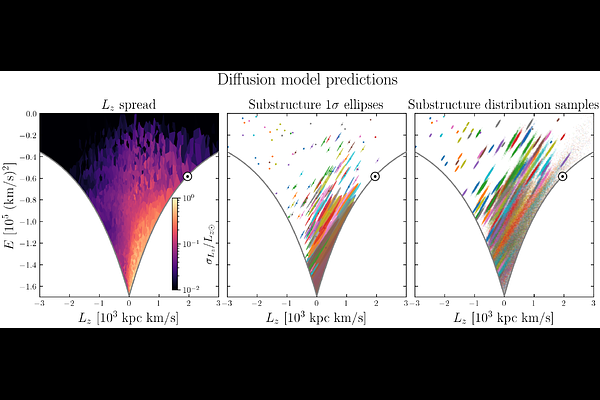Bar-driven dispersal of Galactic substructure

Bar-driven dispersal of Galactic substructure
Adam M. Dillamore, Jason L. Sanders
AbstractGalactic archaeologists often assume that integrals of motion (IoMs) such as $L_z$ and $E$ are conserved, so substructure remains frozen in IoM space over many Gyr. However, this is not true in the Milky Way due in part to its rotating bar. In this study we quantify the effects of the bar on the dynamics of substructure. We employ three different theoretical models: an analytical toy model; a set of test particle simulations with steady and slowing bars; and a cosmological zoom-in simulation of a Milky Way-like galaxy. Each model predicts that the bar increases the angular momentum and energy spread of low-energy substructures by a factor of $\sim10-100$, so they cannot remain tightly clustered. We derive a criterion for determining when this effect is important. The most affected orbits are low energy ($E\lesssim E_\odot$, $r_\mathrm{apo}<40$ kpc), prograde, eccentric, or low inclination. This includes $\sim3/4$ of Galactic globular clusters and $\sim1/4$ of known stellar streams. We predict the presence of abundant bar-dispersed substructure. The structures remain much more tightly clustered in the space of metallicity and Jacobi integral $H_\mathrm{J}=E-\Omega_\mathrm{b}L_z$. We therefore propose using $H_\mathrm{J}$ and chemistry instead of traditional IoMs when searching for inner halo substructure. In $(L_z,E)$ space the dispersal of the structures is along a principal direction with gradient $\mathrm{d}E/\mathrm{d}L_z$ equal to the bar's pattern speed $\Omega_\mathrm{b}$. Bar-dispersed substructure should therefore allow the past evolution of $\Omega_\mathrm{b}$ to be constrained.